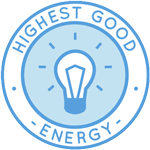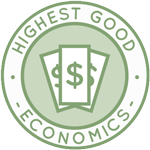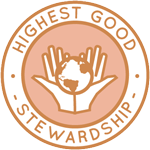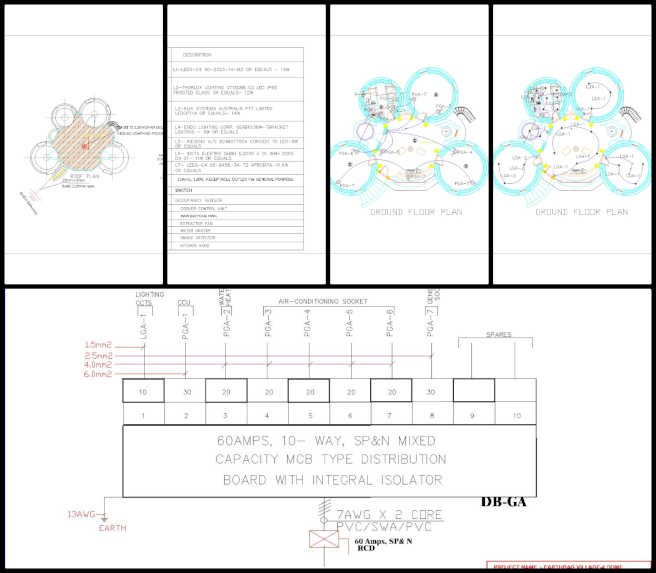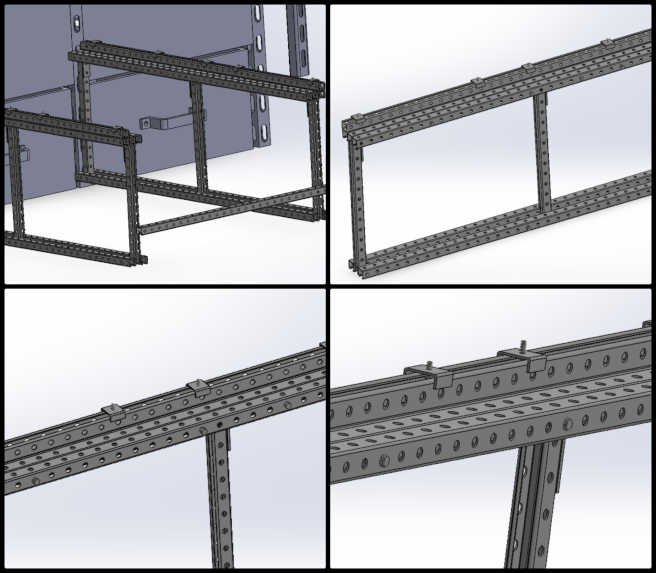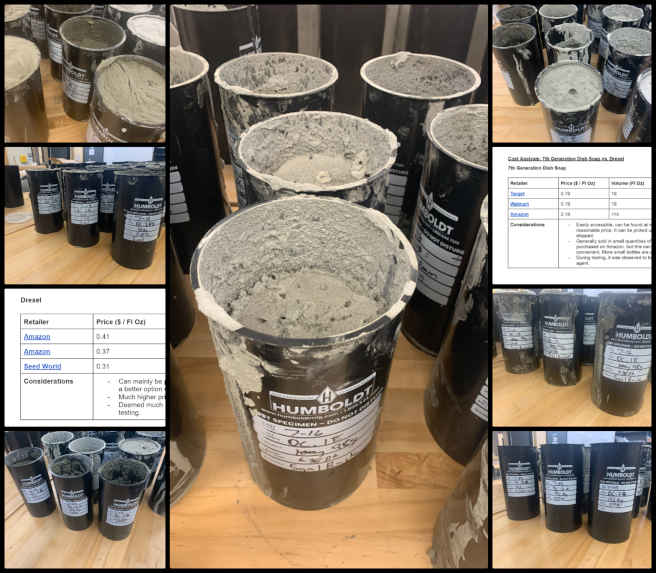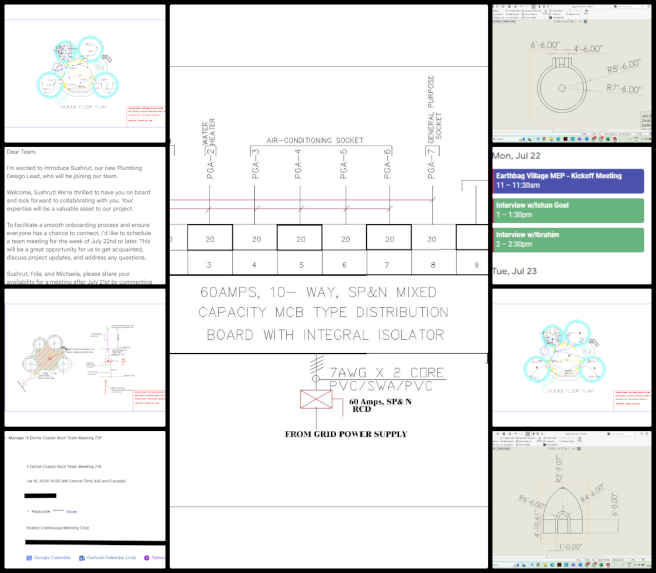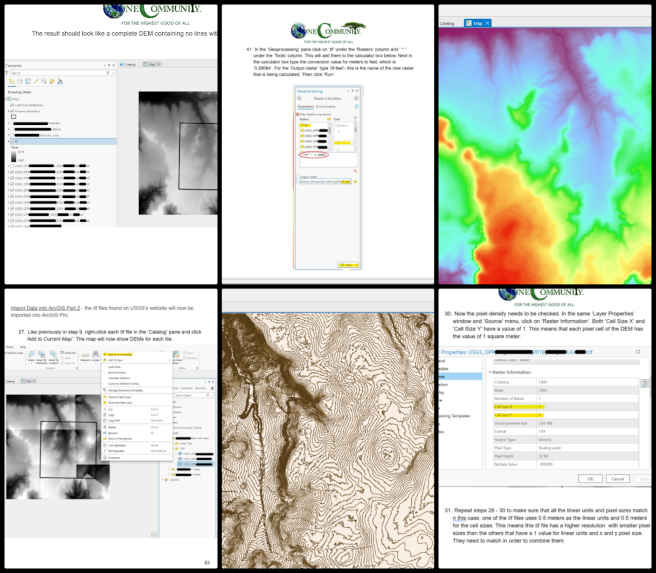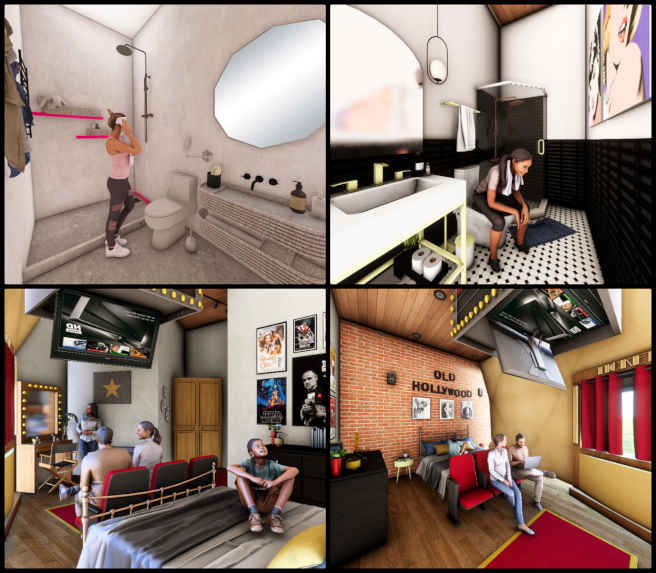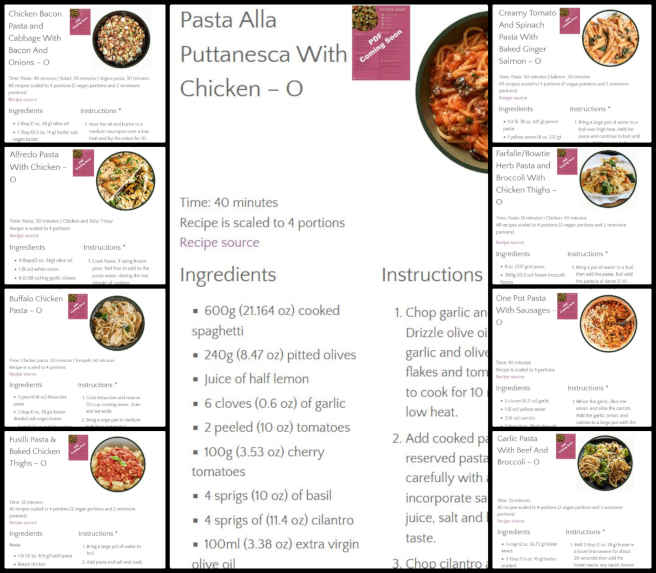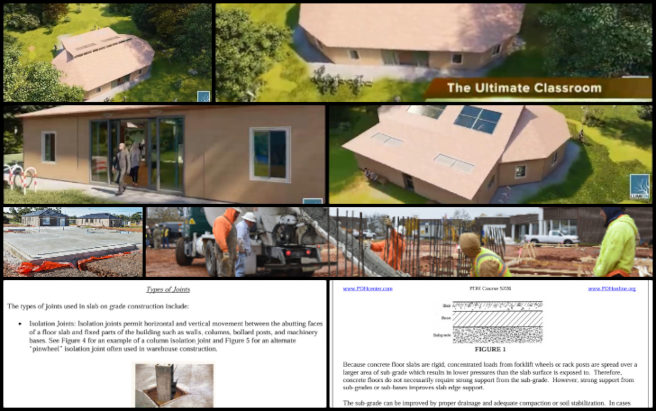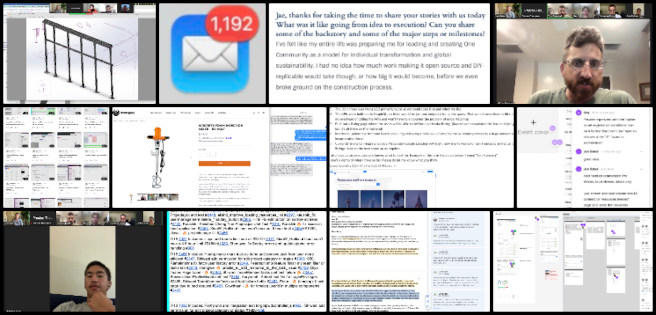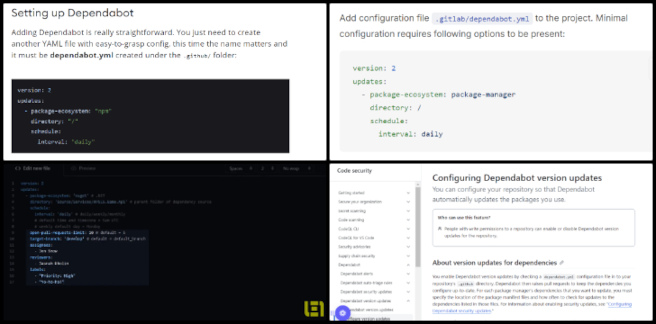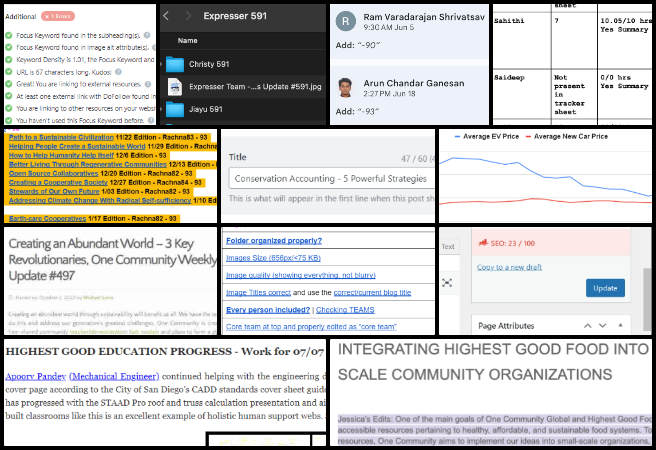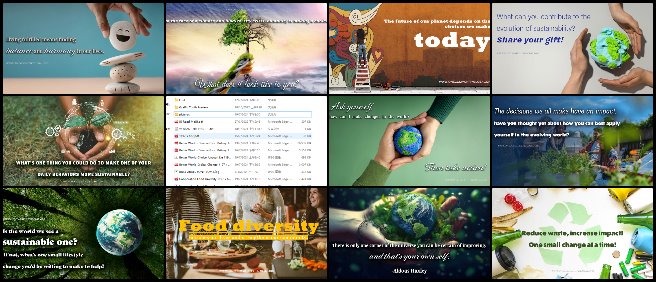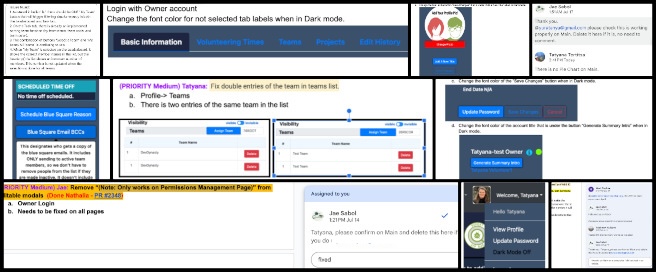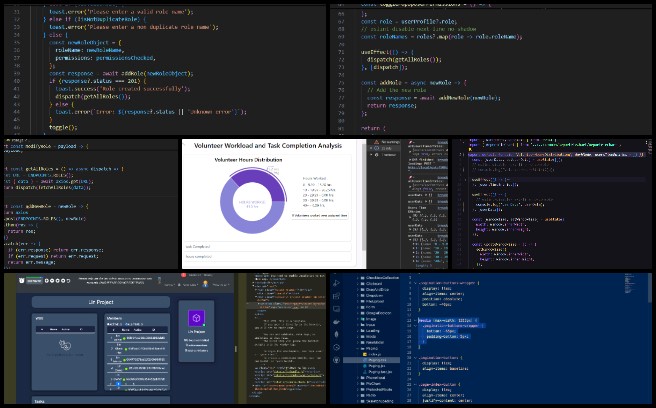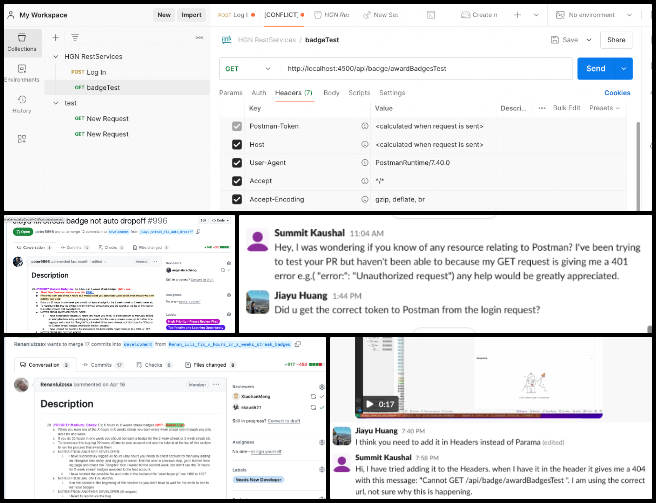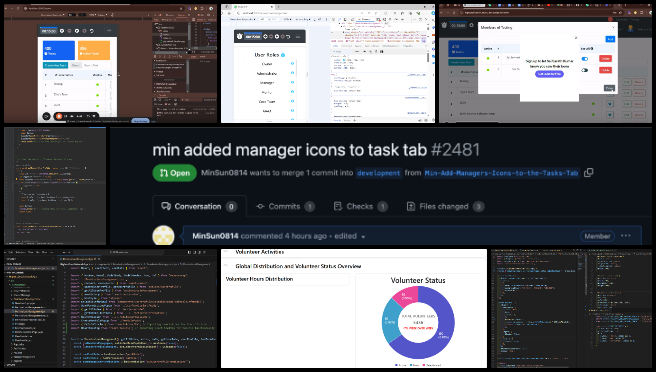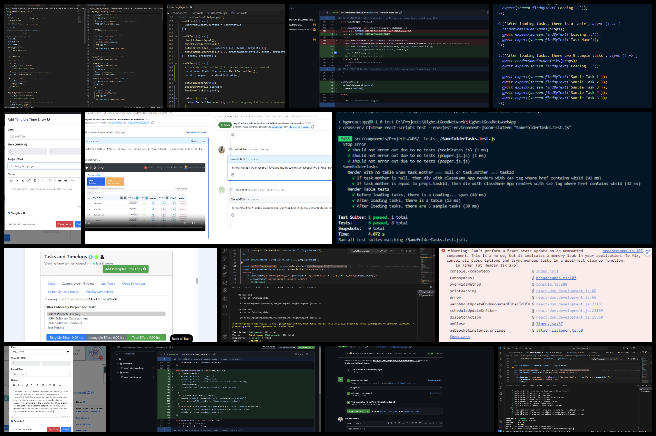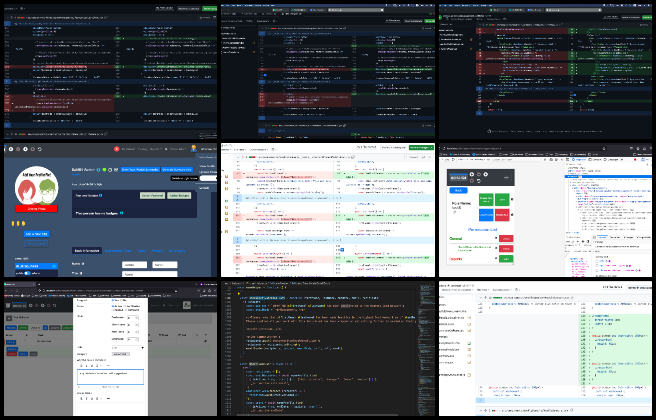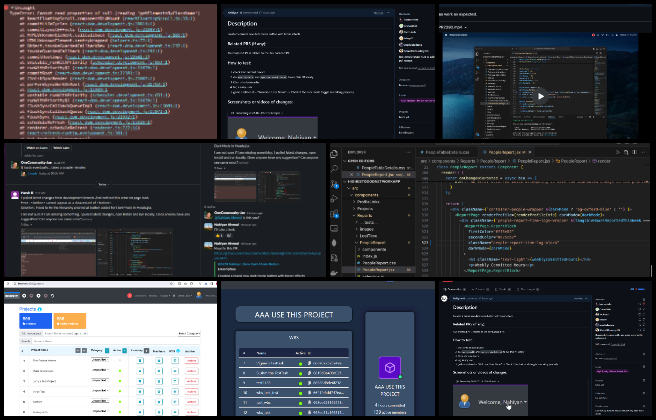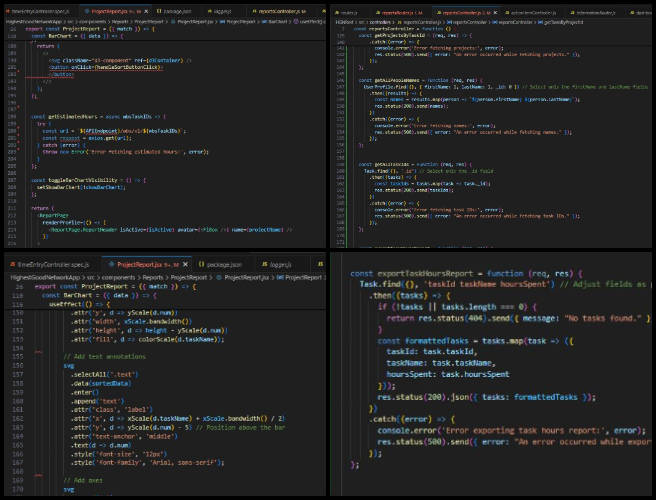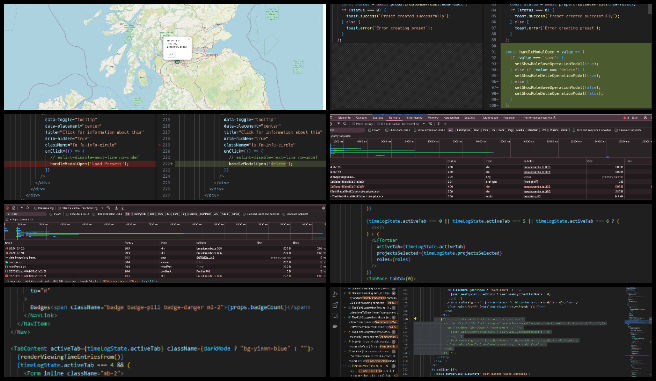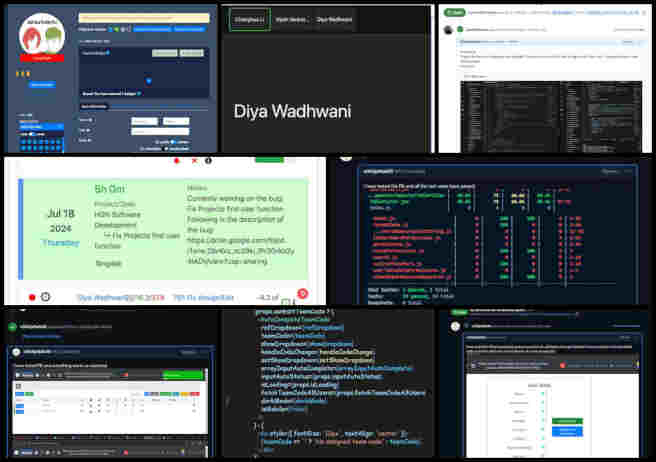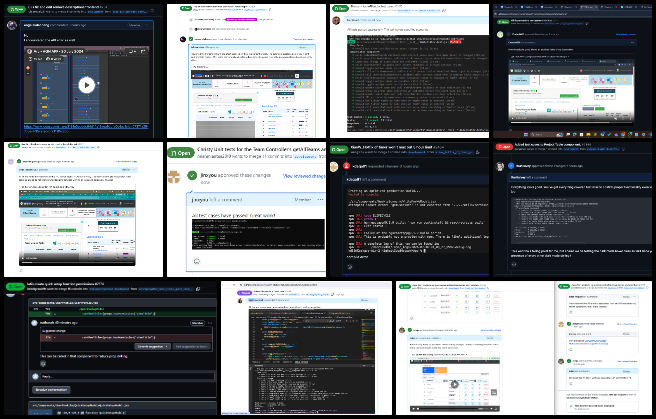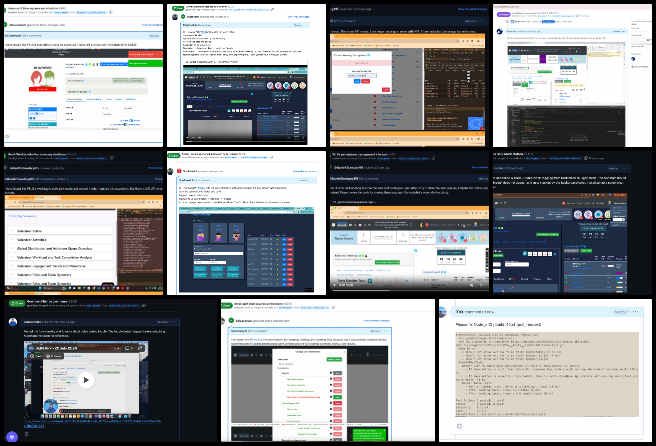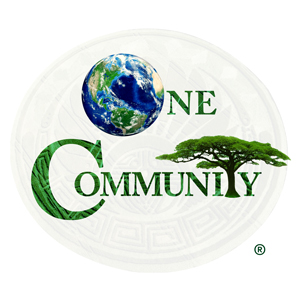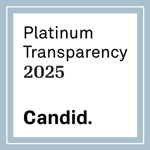Consciously Mapping Humanity’s Future – One Community Weekly Progress Update #592
At One Community, we are dedicated to consciously mapping humanity’s future through sustainable approaches to food, energy, housing, education, and economics. Our all-volunteer team is committed to creating a model that becomes self-replicating, fostering global collaboration through teacher/demonstration hubs. By open sourcing and free sharing the complete process, we aim to evolve sustainability and regenerate our planet. Our mission is to create a world that works for everyone, always striving for “The Highest Good of All.“
- Here’s our project overview
- Here’s our world-change methodology
- Here’s how this becomes self-replicating
- Here’s how we are open source and free-sharing all the do-it-yourself designs

OUR MAIN OPEN SOURCE HUBS
Click on each icon to be taken to the corresponding Highest Good hub page.
One Community’s physical location will forward this movement for consciously mapping humanity’s future as the first of many self-replicating teacher/demonstration communities, villages, and cities to be built around the world. This is the July 22nd, 2024 edition (#592) of our weekly progress update detailing our team’s development and accomplishments:
Consciously Mapping Humanity’s Future
One Community Progress Update #592
DONATE | COLLABORATE | HELP WITH LARGE-SCALE FUNDING
CLICK HERE IF YOU’D LIKE TO RECEIVE AN EMAIL EACH WEEK WHEN WE RELEASE A NEW UPDATE
YOU CAN ALSO JOIN US THROUGH SOCIAL MEDIA
ONE COMMUNITY WEEKLY UPDATE DETAILS
HIGHEST GOOD HOUSING PROGRESS
 One Community is consciously mapping humanity’s future through Highest Good housing that is artistic and beautiful, more affordable, more space efficient, lasts longer, DIY buildable, and constructed with healthy and sustainable materials:
One Community is consciously mapping humanity’s future through Highest Good housing that is artistic and beautiful, more affordable, more space efficient, lasts longer, DIY buildable, and constructed with healthy and sustainable materials:
- Take a look at consciously mapping humanity’s future with Our Upcoming Crowdfunding Campaign
- Learn about the different village models designed as part of consciously mapping humanity’s future: 7 Sustainable Village Models
- Visit the open source portals for the first two: Earthbag Village OS Hub | Straw Bale Village OS Hub
This week, Adefola Madehin (Electrical Design Specialist) continued his work with Earthbag Village designs. Fola revised the socket circuit of the Earthbag 4 Dome Village Electrical Design project and added extractor fans, air-conditioning sockets, kitchen hoods, cooker control units, and water heaters to the electrical design according to the National Electrical Code (NEC). He also amended the schematic diagram of the main electrical panel. The Earthbag Village is the first of 7 to be built as the housing component of One Community’s open source model for consciously mapping humanity’s future. See some of this work in the collage below.
Joseph Osayande (Mechanical Engineer) continued helping finish the Vermiculture Toilet designs. This week, research focused on finding a new connector or interface to keep the frame connected to the stand. Quick drafts of potential structures were created, but nothing concrete has been finalized yet. A new interface that is believed to work for the unistrut was designed, and work continued on other parts of the structure, including the vertical bar. The vermiculture toilets and other sustainable human waste processing technologies form the basis of One Community’s open source model for consciously mapping humanity’s future. See below for some of the pictures related to this work.
Rizwan Syed (Mechanical Engineer) also continued helping finish the Vermiculture Toilet designs. This week, Rizwan worked on connecting unistrut channels for the vermiculture chamber assembly without welding. He designed custom 3D models for L-brackets and wing connectors in SolidWorks, evaluating component interference and assembly ease. Rizwan also documented the mechanical engineering team’s work on the eco-toilet design, including design, analysis, calculations, and cost analysis for posting on One Community’s website. These sustainable technologies contribute to One Community’s open-source model for mapping humanity’s future. Here are a few photos showing examples of his work.
Yagyansh Maheshwari (Mechanical Engineer) started his work with Earthbag Village designs. This week, Yagyansh focused on checking the calculation done on the worm density based on the spreadsheet. He also researched various methods for transporting the drawers to the dumping site and explored different techniques for effectively dumping the contents. This work aims to improve the efficiency of the vermiculture process. The Earthbag Village is the first of 7 to be built as the housing component of One Community’s open source model for consciously mapping humanity’s future. See some of this work in the collage below.
AIRCRETE TEAM
The Aircrete Testing Team’s summary, covering their work on Aircrete Compression Testing was managed by John Sullivan (CBU Chemical Engineering Student) and includes Jonathan Crago (Civil Engineering Student), Preston Thompson (Civil Engineering Student), and Tad Matlock (Environmental Science Student). This week, Tad analyzed 7th Generation Dish Soap and Drexel as foaming agents for Aircrete, completing 27 trial summaries. Jonathan’s team focused on stabilizing the Domegaia method with compression testing. Preston’s team achieved success with high concrete ratio batches, though extra foam testing failed. John’s team addressed collapsing issues, using a concrete mixer for successful trials and editing procedure videos. These efforts support One Community’s sustainable housing model. See below for some of the pictures related to this work.
EARTHBAG VILLAGE 4-DOME ROOF TEAM
The Earthbag Village 4-dome Roof Team was managed by Khushboo Parmar (Project Manager) and includes Karthik Pillai (Volunteer Mechanical Engineer) and Yusuf Thanawala (Structural Engineer). Karthik created 2D dome drawings to improve replicability and aligned them with recent changes, while enhancing his Revit skills. Adefola revised the Earthbag 4 Dome Village Electrical Design to meet NEC standards, updating the socket circuit and main panel schematic. Khushboo conducted interviews, extended offers, and addressed candidate backlogs, while facilitating a project issue resolution meeting. Yusuf continued his loft design work and researched CLT panels for attic use in mass timber construction. These efforts support One Community’s sustainable Earthbag village model. See their work in the collage below.
DUPLICABLE CITY CENTER PROGRESS
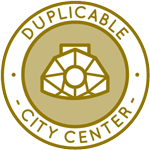 One Community is consciously mapping humanity’s future through a Duplicable and Sustainable City Center that is LEED Platinum certified/Sustainable, can feed 200 people at a time, provide laundry for over 300 people, is beautiful, spacious, and saves resources, money, and space:
One Community is consciously mapping humanity’s future through a Duplicable and Sustainable City Center that is LEED Platinum certified/Sustainable, can feed 200 people at a time, provide laundry for over 300 people, is beautiful, spacious, and saves resources, money, and space:
- Learn about this building and it’s function as part of consciously mapping humanity’s future: Duplicable City Center Open Source Hub
This week, Chris Blair (GIS Technician/Horticulturist) continued working with GIS data as part of One Community’s Permaculture Design. Chris continued developing a written tutorial for utilizing GIS data, detailing the steps to combine various digital elevation models (DEMs) together into one cohesive unit, change linear units, and alter the symbology of a DEM. Additionally, he explored methods to process DEMs to improve their visual smoothness. Proper property modeling and understanding is a foundational part of One Community’s open source model for consciously mapping humanity’s future. Here are a few photos showing examples of his work.
Clarice Gaw Gonzalo (Architect) continued her work with the Duplicable City Center room designs. This week, Clarice worked on editing the Neofuturistic bathroom, addressing issues with the mirror and a few textures. She completed the edits in SketchUp before rendering them in Lumion. She also focused on the Old Hollywood-themed room, adding extra furniture to match the red and gold theme throughout the room. Additionally, she populated the room with people and adjusted the lighting settings, including the sun pathing, while taking several views. The City Center will be built along with the first of the 7 villages as part of One Community’s open source model for consciously mapping humanity’s future. See some of this work in the collage below.
HIGHEST GOOD FOOD PROGRESS
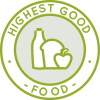 One Community is consciously mapping humanity’s future through Highest Good food that is more diverse, more nutritious, locally grown and sustainable, and part of our open source botanical garden model to support and share bio-diversity:
One Community is consciously mapping humanity’s future through Highest Good food that is more diverse, more nutritious, locally grown and sustainable, and part of our open source botanical garden model to support and share bio-diversity:
- Learn about the food structures we’ve designed for consciously mapping humanity’s future: Hoop House Hub | Aquapini & Walipini Open Source Hub
- See what we’ll be growing first as we’re consciously mapping humanity’s future: Gardens & Hoop Houses | Large-scale Structures | Food Forest | TA
This week, the core team continued updating and expanding the Highest Good Food tools, equipment, materials, and supplies document by adding new items and categorizing tools and equipment into powered and non-powered. New acquisitions included hand tools like bolt cutters, pipe wrenches, and paint brushes, as well as applicators like roller brushes and caulking guns. Additionally, the core team prepared for organized progress reporting by creating and labeling eighteen folders for weekly submissions through mid-November 2024. Highest Good Food is an important part of consciously mapping humanity’s future with One Community’s open source plans. See their work in the collage below.
Charles Gooley (Web Designer) focused this week on the Transition Food Self-sufficiency Plan and completed the replacement of placeholder images for recipe pages, with the exception of one vegan pasta image awaiting provision. This week, Charles focused on correcting anchor links within the materials section of the Tools and Equipment for Open Source Construction master page to ensure proper display in the address bar. Additionally, he addressed an issue where the left margin of the page shifted to the left edge when specific anchor links were clicked. Another task involved populating blank cells in tools, equipment, and materials items that needs to be provided by the authors. See his work in the collage below.
Prathamesh Jadhav (HVAC Design Engineer) started working on Aquapini and Walipini Planting and Harvesting. He reviewed the welcome document and studied topics related to Aquapini and Walipinis. He examined the designs of the Walipini, Aquapini, and Zenapini, including the details and software to be used for each. Additionally, Prathamesh reviewed the design of the Open Source Climate Battery. Highest Good food is an important part of consciously mapping humanity’s future with One Community’s open source plans. See his work in the collage below.
HIGHEST GOOD EDUCATION PROGRESS
 One Community is consciously mapping humanity’s future through Highest Good education that is for all ages, applicable in any environment, adaptable to individual needs, far exceeds traditional education standards, and more fun for both the teachers and the students. This component of One Community is about 95% complete with only the Open Source School Licensing and Ultimate Classroom construction and assembly details remaining to be finished. With over a decade of work invested in the process, the sections below are all complete until we move onto the property and continue the development and open sourcing process with teachers and students – a development process that is built directly into the structure of the education program and everything else we’re creating too:
One Community is consciously mapping humanity’s future through Highest Good education that is for all ages, applicable in any environment, adaptable to individual needs, far exceeds traditional education standards, and more fun for both the teachers and the students. This component of One Community is about 95% complete with only the Open Source School Licensing and Ultimate Classroom construction and assembly details remaining to be finished. With over a decade of work invested in the process, the sections below are all complete until we move onto the property and continue the development and open sourcing process with teachers and students – a development process that is built directly into the structure of the education program and everything else we’re creating too:
- Education program overview for consciously mapping humanity’s future: Education Open Source Hub
- How the components work together for consciously mapping humanity’s future: How to use the Education for Life Program
- Lesson Plans for Life – Lesson Plans How-to
- Foundations of Outstanding Leaders, Teachers, and Communicators interested in consciously mapping humanity’s future
- Curriculum for Life (and consciously mapping humanity’s future)
- Teaching Strategies for Life (and consciously mapping humanity’s future)
- Learning Tools and Toys for Life (and consciously mapping humanity’s future)
- Evaluation and Evolution
This week Brian Mwoyowatidi (Graduate Structural Engineer) continued helping with the engineering details for The Ultimate Classroom part of the Highest Good Education component. Brian focused on building layout, formwork setup, and design considerations, discussing foundation construction, concrete curing methods, and inspections. He added video visual aids to the tutorial and provided step-by-step guidance on subfloor preparation, including subgrade assessment, sub-base installation, proof rolling, vapor barrier placement, and reinforcement. His work supports One Community’s sustainable education model for mapping humanity’s future. See the collage below for his work.
HIGHEST GOOD SOCIETY PROGRESS
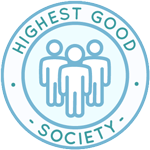 One Community is consciously mapping humanity’s future through a Highest Good society approach to living that is founded on fulfilled living, the study of meeting human needs, Community, and making a difference in the world:
One Community is consciously mapping humanity’s future through a Highest Good society approach to living that is founded on fulfilled living, the study of meeting human needs, Community, and making a difference in the world:
- Read the Highest Good society overview: Highest Good Society
- Learn about the model for fulfilled living and sharing: A Day in the Life
- Learn about the 4 economic models: RBE | For-profit | Non-profit | Entrepreneurship
This week, the core team completed over 65 hours managing One Community’s volunteer-work review not included above, emails, social media accounts, web development, new bug identification and bug-fix integration for the Highest Good Network software, and interviewing and getting set up new volunteer team members. They also shot and incorporated the video above that talks about consciously mapping humanity’s future and how consciously mapping humanity’s future is a foundation of the bigger picture of everything One Community is doing. The picture below shows some of this work.
Arun Chandar Ganesan (Volunteer Data Analyst and SEO and Social Media Assistant) focused on improving webpage SEO, reviewing numerous pages, including some previously abandoned ones. He also improved the scores of his previous web pages. Additionally, Arun managed and coordinated the scheduling of posts on One Community’s social media platforms such as Facebook, Instagram, Pinterest, and LinkedIn, and regularly updated the tutorials. This work helps One Community to broaden our reach in social media and spread our message about consciously mapping humanity’s future. The following images show his work for the week.
Ibrahim Al Balushi (Software Engineer) continued working on security and stability related issues for the Highest Good Network software. He completed research and identified a tutorial to address the Dependabot issues. Relevant tutorials were incorporated into the bugs document, an action item list was added, and further research was done to identify additional safe tutorials while awaiting approval. This work helps One Community’s mission of consciously mapping humanity’s future. The picture below shows some of his work.
Jia Shu (UX Designer) collaborated with John to delve into Phase 3 PRD, covering epics, user stories, tasks, and priorities. John advised on low-fidelity prototyping, paving the way for mid-fidelity prototypes. The team began studying web and iOS/Android design systems from Material Design, Android Design, and Apple Design to enhance user experience. They structured the design system around six epics and user stories, focusing on UI elements like colors and icons in Figma. Research continues on tasks such as activity evaluation, tracking, FAQ, calendar integration, and reports. This work contributes to One Community’s mission of mapping humanity’s future. The picture below shows some of this work.
Jiaqi Wu (UX Designer) created the event page for activity organizers, the detailed information page for events, and the main dashboard. She incorporated the PM’s advice by adding filters to the event calendar and agreed on the functionality of the event page and the workflow of the resources manager. Additionally, she collaborated with the PM and another UX designer, providing advice and making some concessions. This work helps One Community’s mission of consciously mapping humanity’s future. The picture below shows some of this work.
ADMINISTRATION TEAM
The Administration Team’s summary, covering their work administrating and managing most of One Community’s ongoing process for consciously mapping humanity’s future was managed by Sneka Vetriappan (Data Analyst) and includes Jessica Fairbanks (Administrative Assistant), Jim Zhang (Administrative Assistant), Kishan Sivakumar (Administative Assistant and Software Team Manager), Michael Juma (Administrative Assistant), Olawunmi “Ola” Ijisesan (Administrative and Management Support), Rachna Malav (Data Analyst), Ratna Meena Shivakumar (Data Analyst and Admin), Ruiqi Liu (Administrative Assistant), Saumit Chinchkhandi (Software Engineer), T R Samarth Urs (Data Analyst), Vibhav Chimatapu (Data Analyst/Admin Assistant) and Zuqi Li (Administrative Assistant and Economic Analyst). This week, Jessica began familiarizing herself with the HG Food Rollout plan and reviewed the new administrator’s training process. Jim updated the electrical vehicle page, analyzed cost savings, and searched for golf cart prices.
Kishan did his part helping us consciously mapping humanity’s future as he focused on optimizing the weekly update blog for SEO, while Michael continued improving blogs #490 to #499, addressing SEO metrics and keyword density. Ola reviewed the PR team’s work, trained new team volunteers, and organized the workspace. Rachna handled her regular administrative duties, created the weekly blog, and prepared for her transition to a new role as a mentor at One Community.
Ratna managed OC Administration tasks, including email reviews, blog updates, and social media post scheduling. Ruiqi completed the review process for the Dev Dynasty and Git-R-Done Team, ensured bio announcements were prepared, and worked on benchmarking Excel. Saumit did some work consciously mapping humanity’s future as he reviewed work, began PR review training, and participated in a Zoom meeting discussing new responsibilities. Samarth managed the PR review team, evaluated their work, optimized blog #531, and created a blog post summarizing the team’s work.
Vibhav proofread PR Team summaries, created group summaries and collages, and continued SEO optimization. Zuqi organized weekly summaries, updated the blog, and reviewed previous blog pages for SEO improvements. One Community’s model for consciously mapping humanity’s future includes developing and maintaining a supportive administration team like this. You can see the work for the team in the image below.
GRAPHIC DESIGN TEAM
The Graphic Design Team’s summary was managed by Zuqi Li (Administrative Assistant and Economic Analyst) and included Ashlesha Navale (Graphic Designer) and Junyuan Liu (Graphic Designer, UI/UX Designer), covering their work on graphic designs for consciously mapping humanity’s future. This week, Ashlesha curated nature-based and theme-based background images for social media, producing nine images focused on self-improvement and sustainability. She also updated old social media and food recipe images. Liu, in his orientation process, learned about One Community’s mission and contributed by completing two social media images while working on a third. Their work supports One Community’s efforts in consciously mapping humanity’s future. See the collage below to view their contributions.
HIGHEST GOOD NETWORK PROGRESS
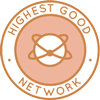 One Community is consciously mapping humanity’s future through open source Highest Good Network® software that is a web-based application for collaboration, time tracking, and objective data collection. The purpose of the Highest Good Network is to provide software for internal operations and external cooperation. It is being designed for global use in support of the different countries and communities replicating the One Community sustainable village models and related components.
One Community is consciously mapping humanity’s future through open source Highest Good Network® software that is a web-based application for collaboration, time tracking, and objective data collection. The purpose of the Highest Good Network is to provide software for internal operations and external cooperation. It is being designed for global use in support of the different countries and communities replicating the One Community sustainable village models and related components.
- Learn about our open source community collaboration and management software designed for tracking and managing our process of consciously mapping humanity’s future: The Highest Good Network
This week, the core team continued their work on the Highest Good Network PRs testing, confirming the fixed PRs. This week, Several PRs were reviewed, including PR#2163 (copy WBS and Project ID functionality), PR#2348 (removed “Note” message on Profile page), PR#2295 (fixed Dark mode on SendEmail page), PR#2425 (fixed Dark mode for WBS page), and PR#2349 (fixed user creation errors). The timer issue was resolved, and FPR2409 and BPR1015 for the Chart Pie feature were tested. Unresolved issues include Profile page Dark mode problems, time log edits not appearing in history, PR#2078 errors, and visual issues with the Dark mode menu. This work supports One Community’s mission of mapping humanity’s future. See the collage below for more details.
ALPHA SOFTWARE DEVELOPMENT TEAM
The Alpha Team’s summary, covering their work on the Highest Good Network software was managed by Lin Khant Htel (Frontend Software Developer) and includes Carlos Gomez (Full-stack Software Developer) and Logeshwari Renu (Software Engineer). The Highest Good Network software is how we will manage and measure our processes for consciously mapping humanity’s future across our social architecture, construction, production, and maintenance processes. This week, Lin focused on fixing the pagination UI for members in PR 2476. He reviewed and approved the unit testing and integration testing for PR 1021 (Project Controller) and PR 1027 (Time Zone API). Additionally, Lin reviewed the weekly summaries, photos, and videos related to the tasks of his team Alpha members.
Carlos reviewed the project backend using Abi’s API at the route api/reports/volunteerstats?startDate={startDate}&endDate={endDate}, focusing on fixing the aggregation logic. He analyzed another existing endpoint that uses api/TimeEntry/users and decided to use the getTimeEntriesForUsersList function from this endpoint. On the frontend, he did his part consciously mapping humanity’s future as he set up a list using allUserProfileReducer and filtered it for active users. He then built a reducer to manage time entries, named allUsersTimeEntrieReducer. Data for TotalOrgSummary.jsx, VolunteerHoursDistribution.jsx, and ReportPieChart.jsx was programmed, with state variables set up accordingly. The UI for Volunteer Hours Distribution is now 90% complete.
Logeshwari addressed an issue where newly created roles were not displayed in Permission Management. The solution involved updating role.js to call the API and create a new role via the addNewRole function, modifying PermissionsManagement.jsx to pass getAllRoles as a prop to CreateNewRolePopup in the ModalBody, and updating NewRolePopUp.jsx to include getAllRoles in mapDispatchToProps, as well as calling getAllRoles after successful role creation in handleSubmit. A pull request for review was created under PR 2471. See the Highest Good Society and Highest Good Network pages for more on how this relates to consciously mapping humanity’s future. View some of the team’s work in the collage below.
BADGES BUGS SOFTWARE DEVELOPMENT TEAM
The Badges Bugs Team’s summary overseeing advancements in the Highest Good Network software was managed by Summit Kaushal (Backend Software Developer). This week, Summit addressed a Postman issue related to HGN by reviewing documents, collaborating on Slack, troubleshooting 401 and 404 errors, and experimenting with user authentication. He identified the need for further consultation with HGN members. Additionally, Summit managed recruitment activities and continued debugging efforts. This work supports One Community’s mission of mapping humanity’s future through the Highest Good Network. See the Highest Good Society and Highest Good Network pages for more. View some of the team’s work in the collage below.
BINARY BRIGADE SOFTWARE DEVELOPMENT TEAM
The Binary Brigade Team’s summary overseeing advancements in the Highest Good Network software was managed by Min Sun (Software Engineer) and includes Aaryaneil Nimbalkar (Software Developer), Deepthi Kannan (Software Engineer), Peizhou Zhang (Software Engineer), Sai Sarath Kumar Alavakonda (Software Engineer), Sandhya Adavikolanu (Software Developer), Sri Sudersan Thopey Ganesh (Software Engineer), Vigneshwar (Software Engineer), and Vijay Anand Pandian (Full Stack Software Engineer). The Highest Good Network software is how we’ll be consciously mapping humanity’s future through our social architecture, construction, production, and maintenance processes. This week, the HGN Software Development team worked on various tasks. Min completed adding manager icons to the dashboard and began optimizing the team report page loading speed. He also managed weekly meetings and reports.
Vigneshwar focused on creating a global volunteer network map, including developing a sample database and application with a map and volunteer status pie chart. He addressed challenges integrating the map and plans to use actual volunteer data next. Sri developed the VolunteerStatusPieChart component using Chart.js and created a separate PR for the Blue Square Stats component using D3.
Sai did his part consciously mapping humanity’s future as he resolved UI issues and backend problems affecting the “see all” toggle functionality. He also implemented a solution to display active and inactive team member counts on the Teams page.
Vijay completed various UI fixes for narrow screens and auto scroll functionality, reviewed pull requests, and addressed bugs. Peizhou completed his assigned task and requested further improvement assistance before moving on to a new one. Deepthi did her part consciously mapping humanity’s future as she edited and enhanced the HGN Phase 1 User Manual and implemented informational icons with tooltips for user roles on the Permissions Management page. Aaryaneil added test cases and reviewed several pull requests.
Sandhya advanced the data accuracy testing dashboard for HGN Software Development. She finalized styling, ensured responsiveness across devices, integrated the component with the main application, implemented data filters and date range selectors, conducted testing, and updated documentation. She also collaborated with the team, gathered feedback, and validated volunteer status data, identifying discrepancies in the “Task Completed Bar Chart” that will be addressed in a meeting with Harsh. See the Highest Good Society and Highest Good Network pages for more on how this relates to consciously mapping humanity’s future. View some of the team’s work in the collage below.
BLUE STEEL SOFTWARE DEVELOPMENT TEAM
The Blue Steel Team’s summary, presenting their work on the Highest Good Network software was managed by Jingyi Jia (Software Engineer, Team Manager), and includes Imran Issa (Software Developer), Jay Srinivasan (Software Engineer), Parth Rasu Jangid (Software Developer), Ramakrishna Aruva (Software Engineer), Tzu Ning “Leo” Chueh (Software Engineer), and Vishavdeep Kaur (Full stack Developer). The Highest Good Network software is how we’ll be managing and objectively measuring our process for consciously mapping humanity’s future through our social architecture, construction, production, and maintenance processes. This week, Parth worked on integration tests for the timeZoneAPIController, requiring an API key for proper functionality. He also reviewed three pull requests: numbers 962, 2431, and 2470, resolved conflicts in his pull request, and discussed unit testing with Luis.
Jay focused on Team Blue Steel, providing feedback and completing unit tests for the SameFolderTasks component, addressing merge conflicts, and preparing a pull request for development integration. Imran tackled component testing challenges related to permission settings, resolved failing test cases from the previous week, and managed to open a pull request after updating his branch and fixing conflicts.
Ramakrishna did his part consciously mapping humanity’s future as he implemented advanced techniques like heap and hashing to optimize the replacement of team codes for up to 1000 users and tested changes locally. Tzu Ning did his part consciously mapping humanity’s future as he planned modifications to event handling logic in a form to enhance user interaction by enabling field resetting. Vishavdeep addressed a UI issue as detailed in the “HGN Phase I Bugs and Needed Functionalities” document, created a new branch for the fixes, tested PR2443+1025, and coordinated with Nahiyan for further clarification on the bug.
Jingyi addressed memory leaks in the userProfile page by implementing AbortController in React hooks to manage and cancel ongoing HTTP requests, which helped prevent updates to unmounted components. See the Highest Good Society and the Highest Good Network pages to learn more on how their work contributes to consciously mapping humanity’s future. See below to view images of their work.
CODE CRAFTERS SOFTWARE DEVELOPMENT TEAM
The Code Crafters Team’s summary, covering their work on the Highest Good Network software, was managed by Ruiqi Liu (Administrative Assistant) and includes Pavan Swaroop Lebakula (Software Engineer), Weiyao Li (Software Engineer) and Xiaoyu Chen (Software Engineer). The Highest Good Network software is how we’ll manage and objectively measure our process for consciously mapping humanity’s future through our social architecture, construction, production, and maintenance processes. Pavan reviewed a pull request that was merged without prior review and examined the applications for bugs, finding none that were not already listed on the bugs page. He also claimed several pull requests and prepared to review them, ensuring that all changes aligned with project requirements.
Weiyao worked on the “add roles” feature, which required edit access to create roles with permissions. He has finished the feature and moved to the code review part. He also learned React, Redux, and testing concepts essential for later features. Xiaoyu helped with consciously mapping humanity’s future as she addressed and resolved issues related to a recursive loop and subterms in the codebase as seen in pull request 2444, and corrected several lint errors. She modified the screen size responsiveness and updated the CSS for a button to meet new requirements. Additionally, she implemented fixes for the latest model test and continuous integration test errors as detailed in pull request 2419. The collage below shows some of this work.
DEV DYNASTY SOFTWARE DEVELOPMENT TEAM
The Dev Dynasty Team’s summary, covering their work on the Highest Good Network software, was managed by Nahiyan Ahmed (Full Stack Software Developer) and includes Akshit Sharma (Software Engineer), Anuj Vakil (Software Engineer), Howie Miao (Software Engineer), Harsh Bodgal (Software Engineer). and Jatin Agrawal (Software Engineer), Nandini Yelmela (Software Engineer). The Highest Good Network software is how we’ll manage and objectively measure our process for consciously mapping humanity’s future through our social architecture, construction, production, and maintenance processes.
This week, Nahiyan resolved merge conflicts and addressed changes on the dashboard and permissions management page PRs. He assisted new team members with bug selection and provided feedback on mobile optimization. Nahiyan created PR 2470 for a dark mode button with hover effects and PR 2477 for a hotfix on the timelog page and dashboard scrollbars. Meanwhile, Howie focused on bug fixes, advancing the scrollbar task and working on a fix for end dates for inactive users. The scrollbar task is progressing but still requires interaction with the correct table. This work supports the goal of consciously mapping humanity’s future.
Akshit resolved UI issues on the people report page, including improvements to the task contribution section, added a clear filters button, and formatted PR #2005. He helped with consciously mapping humanity’s future as he addressed requests and merge conflicts in PRs #2382 and #2390, and resolved merge conflicts, eslint, and prettier errors in PR #2309. Additionally, Akshit made UI changes to the overview on the projects and teams page.
Anuj completed PR reviews for #2416 and #2453 and began developing a feature to add a Projects Page Inventory sort button. Jatin worked on PRs 2446, 2443, 2431, 2426, 2413, 2410, 2394, 2391, 2390, and 2385. Jatin did his part consciously mapping humanity’s future as he addressed a bug to allow the owner to edit user data on the user management pages and worked on fixing the UI for weekly summary modals.
Nandini focused on resolving various UI issues and enhancing the layout of the PROJECT REPORT PAGE for the HGN Software Development project. She fixed the WBS placeholder for dark mode, aligning the title correctly for screens 850px and below, adding side spacing for the WBS and Members table at 415px and below, and preventing header overlap in the tasks table for screens between 851px and 1000px. See the Highest Good Society and Highest Good Network pages for more on how this relates to consciously mapping humanity’s future. The collage below shows some of this work.
EXPRESSERS SOFTWARE DEVELOPMENT TEAM
The Expressers Team’s summary, covering their work on the Highest Good Network software, was managed by Christy Guo (Software Engineer). The Highest Good Network software is how we’ll manage and objectively measure our process for consciously mapping humanity’s future through our social architecture, construction, production, and maintenance processes.
This week, Christy continued working on fixing the connection errors and was unable to fetch data errors for the backend implementation for Hour Task Visualization. She worked on resolving backend connectivity issues and configuring those API routing to fetch project information and those related task information. See the Highest Good Society and Highest Good Network pages for more on how this relates to consciously mapping humanity’s future. See the collage below for the team’s work this week.
MOONFALL SOFTWARE DEVELOPMENT TEAM
The Moonfall Team’s summary, covering their work on the Highest Good Network software was managed by Lu Wang (Software Engineer) and includes Abdelmounaim “Abdel” Lallouache (Software Developer), Jiadong Zhang (Volunteer Software Engineer), Shrada Chellasami (Software Engineer) and Yili Sun (Software Engineer). The Highest Good Network software is how we’ll be managing and objectively measuring our process for consciously mapping humanity’s future across our social architecture, construction, production, and maintenance processes.
This week, Abdelmounaim focused on fixing an error that occurred when users attempted to send the setup profile link, which caused the modal not to refresh and clear the input. He raised PR 1035 to implement these fixes. Additionally, he resolved conflicts in PR 1029, removed unused code, and retested the functionality. On PR 2430, Abdelmounaim worked on finding a solution to pass the test by experimenting with different styling options.
This week, Jiadong worked on replacing a badge on the dashboard and updated his local environment to ensure a clean and updated codebase, addressing a potential bug caused by unmerged content. Shrada focused on fixing missing form validation on the user profile page, addressing errors caused by missing frontend validation for the last name field, which currently doesn’t display a warning message when the length is under two characters. Yili worked on resolving issues with the Permissions Management info icons, ensuring the ‘delete role’ popup wouldn’t appear when the ‘save’ popup closed, and fixed the unresponsive close icon for the ‘delete’ popup.
Additionally, Yili worked on several UI improvements for the User Management Page, adjusting elements like the show button, dropdown filter, search input, and table font size to improve layout and usability across different screen sizes. The setup invitation history modal, Setup New User modal, and reset password modal were also updated for better visibility and space management at smaller screen sizes. These efforts contribute to One Community’s vision of consciously mapping humanity’s future through enhanced usability and functionality. See collage below.
REACTONAUTS SOFTWARE DEVELOPMENT TEAM
The Reactonauts Team’s summary, covering their work on the Highest Good Network software was managed by Changhao Li (Software Engineer) and includes Dhairya Mehta (Software Engineer), Diya Wadhwani (Software Developer), Hoang Pham (Software Developer), Nikhil Pittala (Software Engineer), Peterson Rodrigues dos Santos (Full-Stack MERN Stack Developer), Vijeth Venkatesha (Full Stack Developer) and Yash Agrawal (Software Engineer).This week, Changhao managed the team and developed unit tests for the Highest Good Network software, supporting progress in social architecture, construction, and maintenance. He welcomed a new team member, hosted the weekly meeting, and monitored time logs. Changhao processed extension requests, created a folder for team progress uploads, and worked on testing and modifying unit tests for timeentry.jsx.
Dhairya focused on addressing the “Fix Projects find user function” task. He did his part consciously mapping humanity’s future as he accurately identified the root cause of the issue affecting user discovery within the projects section. Leveraging this understanding, Dhairya took proactive steps to develop a comprehensive sort and search function.
This week, Diya reviewed the development branch, identified six bugs across Timelog, Reports, and UserProfile, and added them to the bug tracker. A hotfix was implemented for the teams page, with a pull request raised for review. Backend improvements were made for manual assignments and blue square edits, and UI changes aligned with Figma mockups were pushed through pull requests #1038 and #2475. A cursor placement issue remains for the summary field when selecting a date without a description.
Hoang addressed merge conflicts on two open PRs: “Make Mark Task as Done and Remove Task from User More Efficient” (#2347) and “Fix Viewing Other Dashboard” (#2257 and #949). Additionally, Hoang attempted a hotfix for the /timelog route accessibility issue. Hoang is doing his part consciously mapping humanity’s future as he is also coordinating with the PR reviewer, Diya, to re-test a problem related to submitting weekly summaries on behalf of others when viewing their dashboards, as the issue no longer seemed to exist. Furthermore, Hoang is reviewing feedback and making necessary adjustments to ensure the functionality and efficiency of the updates made to the system.
Nikhil completed 18 pull requests, covering both frontend and backend development as well as unit testing. As a new addition to the development team, Nikhil did his part consciously mapping humanity’s future as he spent time familiarizing himself with the code base to ensure a solid understanding before taking on further tasks. This involved reviewing existing code, understanding the architecture, and identifying key components and their interactions.
Peterson improved his pull request implementing the autocomplete feature for the code assignment input on the user profile page. The enhancements included adding three columns and ten rows in the autocomplete. As the user types in the input, the autocomplete filters to suggest codes similar to the entered text. If there are only three suggested codes, only one column and three rows are displayed. Additionally, the autocomplete now has scrolling when there are more than thirty codes available.
Vijeth worked on Docker for the front-end application, ensuring the Docker environment was fully tested and operational. He did his part consciously mapping humanity’s future as he deployed the Docker image on Docker Hub. Additionally, he attended weekly meetings, providing updates on his progress to keep the team informed. Vijeth also communicated with his manager about adjusting the number of hours allocated for the project. He then reviewed the project structure and the dashboard for future changes.
Yashu updated the React code with useState and useEffect hooks to manually refetch data using the useQuery hook. An Apollo Client was built with apollo-boost to consume GraphQL. The useQuery and useMutation hooks were refactored to use Apollo Hooks for more efficient handling. Session cookies were utilized to keep users signed in, and the CSRF token client authentication was set up to prevent CSRF attacks. The Google Location API was integrated for location data, and the Google Maps SDK for Node.js was added to list nearby places. Wildcard matching was also integrated to improve search results for queries. See the collage below for the team’s work this week.
SKYE’S SOFTWARE DEVELOPMENT TEAM
The Skye Team’s summary, covering their work on the Highest Good Network software was managed by Luis Arevalo (Software Engineer) and includes, Gowtham Dongari (Software Engineer), Hui Kong (Software Engineer) and Youyou Zhang (Full Stuck Developer). This week, Gowtham resolved key issues in the HGN Software Development project, focusing on time log and user profile functionalities. He fixed a critical issue with the user time log page, created a hotfix for dynamic user ID updates, and submitted PR #2465 to address multiple time log issues. Gowtham also finalized changes for PR #2410 and resolved the team location search error, ensuring correct functionality across user profiles. His contributions support the HGN platform’s mission in mapping humanity’s future.
Hui did her part helping us consciously mapping humanity’s future as she reviewed back end and front end Pull Requests 945, 1027, 1037, 2297, 2342, 2345, 2383 + 1004, 2421 and 2469, examined the recent bugs in the ‘HGN Phase I Bugs and Needed Functionalities’. Hui also contacted the unit testing team but no response.
Luis continued testing the inventoryController and worked on error cases when testing the transferInvById function. He completed unit testing on the postInvInProject function and followed up with Parth regarding an issue, planning to complete the transferInvById unit test and move on to the next function.
Youyou reviewed and modified code to address changes requested in her last PR, specifically handling edge cases to trim spaces at the end of user input to prevent duplicates. She also worked on a new task to adjust the margin of certain icons when the accompanying text is too long. Additionally, she reviewed PR 2453, which involves a unit test for a component. Finally, Youyou completed writing her personal bio paragraph for the team member’s page. See the Highest Good Society and Highest Good Network pages for more on how this relates to consciously mapping humanity’s future. See the collage below for the team’s work this week.
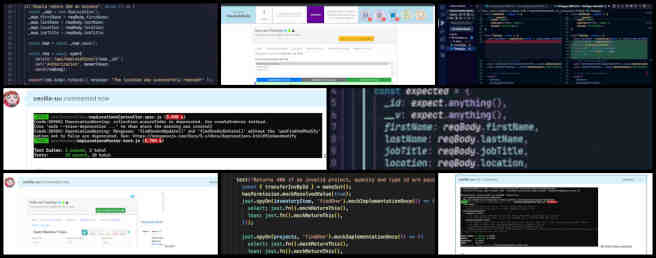 SOFTWARE PR REVIEW TEAM A-O
SOFTWARE PR REVIEW TEAM A-O
The PR Review Team’s summaries for team members’ names starting with A-O and covering their work on the Highest Good Network software was managed by Vibhav Chimatapu (Data Analyst/Admin Assistant). This week’s active members of this team were: Ambika Kabra (Volunteer Software Engineer), Angela Cheng (Full Stack Developer), Carl Bebli (Software Engineer), Chetan Sunku (Software Engineer), Ishan Miglani (Software Engineer), Gaurav Setty (Software Engineer), Jinxiong You (Software Engineer), Keshav Daga (Software Engineer), Kurtis Ivey (Software Engineer), Nathan Hoffman (Software Engineer), Niketha Anand (Software Engineer), and Olga Yudkin (Software Engineer). The team reviewed all the Highest Good Network PRs (Pull Requests) shared in this week’s update. See the collage below for the team’s work this week.
SOFTWARE PR REVIEW TEAM P-Z
The PR Review Team’s summary for team members’ names starting with P-Z and covering their work on the Highest Good Network software was managed by Olawunmi “Ola” Ijisesan (Administrative and Management Support), and Samarth Urs (Administrative Assistant and Data Analyst). This week’s active members of this team were: Rama Srikanth Kotaru (Software Engineer), Ramya Ramasamy (Full Stack Developer), Reina Takahara (Software Developer), Sailavanya Narthu (Software Engineer), Shadhrush Swaroop (Full Stack Software Engineer), Shengwei “Peter” Peng (Software Engineer), Sourav Girish Walke (Full Stack Engineer), Vaishnavi Kulkarni (Software Engineer), Xiao Wang (Software Engineer), Yiyun Tan (Software Engineer) and Zijie Yu (Software Engineer). See below for the team’s work this week.
AND WE PRODUCED THIS WEEKLY UPDATES BLOG – CLICK HERE TO SUBSCRIBE
FOLLOW ONE COMMUNITY’S PROGRESS (click icons for our pages)
INVESTOR PAGES
 One Community
One Community